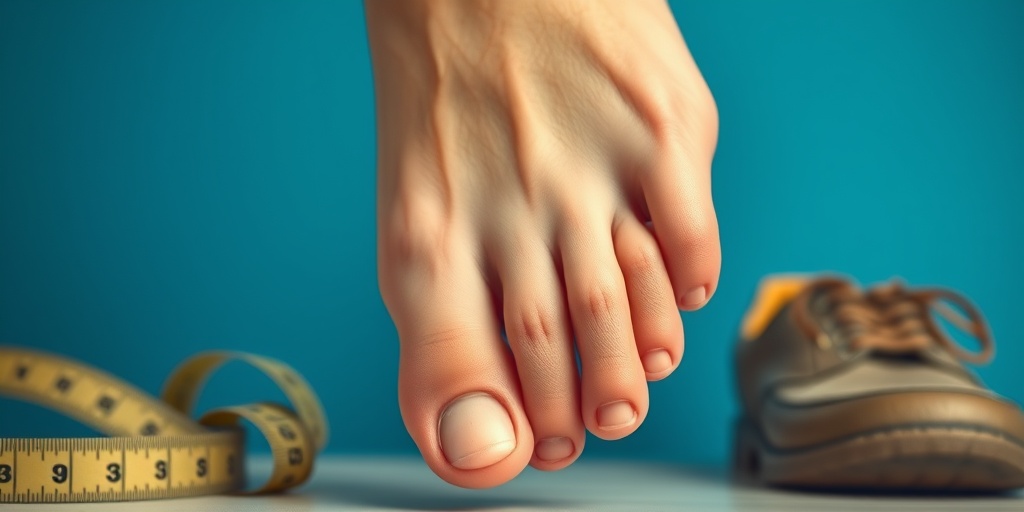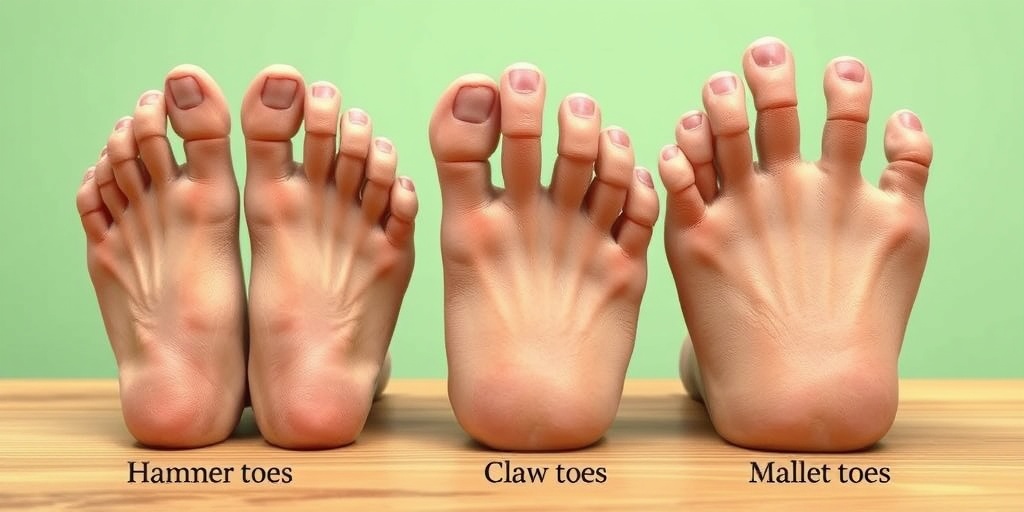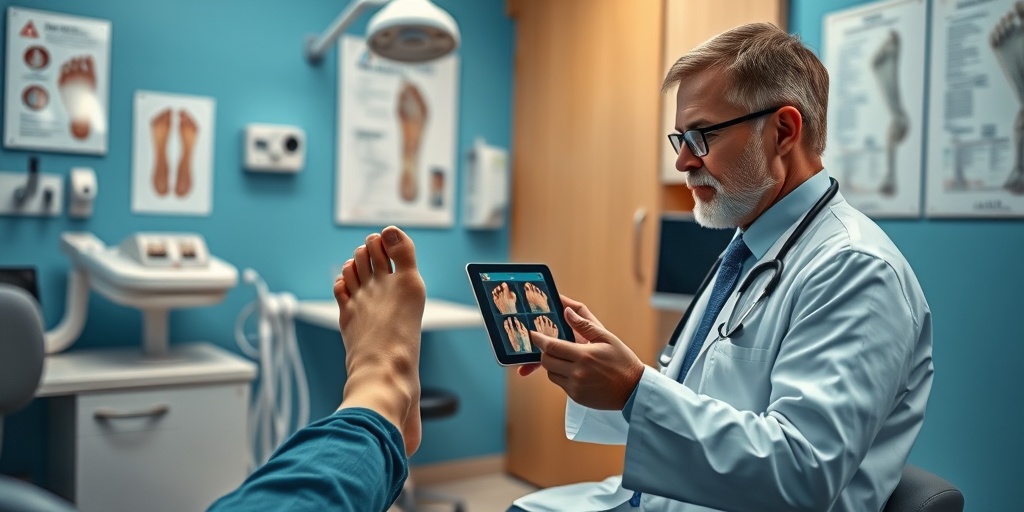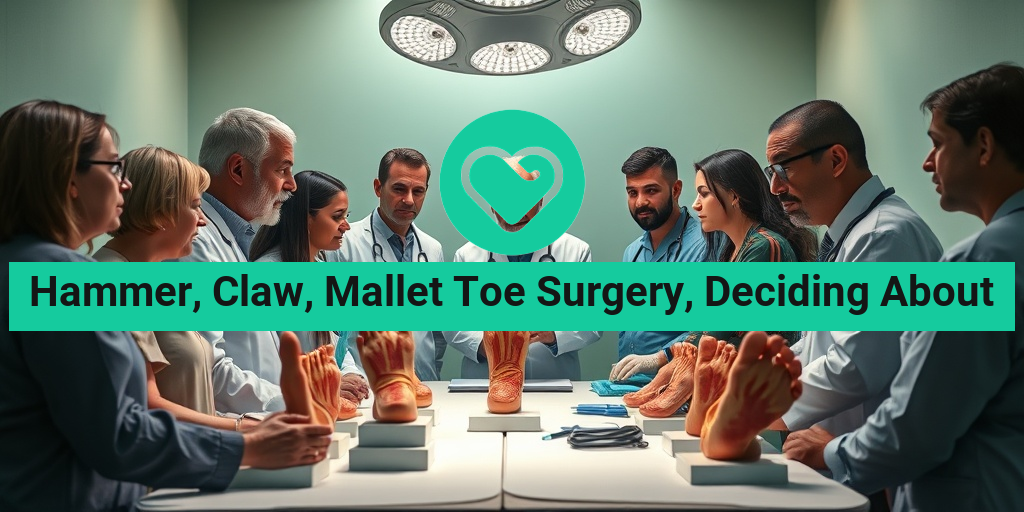What Are Hammer Toes?
Hammer toes are a common foot condition characterized by an abnormal bending of one or more toes, typically affecting the second, third, or fourth toe. This deformity causes the toe to bend downward at the middle joint, resembling a hammer, hence the name. Hammer toes can lead to discomfort, pain, and difficulty in finding suitable footwear, making it essential to understand their causes, symptoms, and treatment options.
Causes of Hammer Toes
Several factors can contribute to the development of hammer toes, including:
- Genetics: A family history of foot problems can increase the likelihood of developing hammer toes.
- Improper Footwear: Shoes that are too tight, narrow, or high-heeled can force the toes into unnatural positions.
- Muscle Imbalance: Weakness or imbalances in the muscles and tendons of the foot can lead to toe deformities.
- Arthritis: Conditions like rheumatoid arthritis can contribute to joint deformities, including hammer toes.
Symptoms of Hammer Toes
Individuals with hammer toes may experience a range of symptoms, including:
- Pain and Discomfort: Pain in the affected toe, especially when wearing shoes.
- Swelling and Redness: Inflammation around the toe joint.
- Calluses or Corns: Thickened skin on the top of the toe or on the ball of the foot due to friction.
- Difficulty Moving the Toe: Limited range of motion in the affected toe.
Treatment Options for Hammer Toes
Treatment for hammer toes varies depending on the severity of the condition. Options include:
- Conservative Treatments: These may include wearing wider shoes, using orthotic devices, and performing toe exercises to improve flexibility.
- Medications: Over-the-counter pain relievers can help manage discomfort.
- Surgery: In severe cases, hammer toe surgery may be necessary to correct the deformity and relieve pain.
For those considering surgical options, it’s crucial to consult with a healthcare professional to discuss the best approach tailored to individual needs. Resources like Yesil Health AI can provide evidence-based health answers to help you make informed decisions.
Understanding Claw Toes
Claw toes are another type of toe deformity that can cause significant discomfort and impact daily activities. Similar to hammer toes, claw toes involve an abnormal bending of the toes, but they typically affect the last joint, causing the toe to curl downward while the middle joint may bend upward. This condition can affect one or multiple toes and is often associated with other foot problems.
Causes of Claw Toes
Claw toes can arise from various factors, including:
- Nerve Damage: Conditions such as diabetes can lead to nerve damage, resulting in muscle imbalances that cause claw toes.
- Footwear Choices: Similar to hammer toes, wearing ill-fitting shoes can exacerbate the condition.
- Underlying Health Conditions: Conditions like cerebral palsy or stroke can lead to muscle weakness and toe deformities.
Symptoms of Claw Toes
Symptoms of claw toes may include:
- Pain and Discomfort: Pain in the toes and the ball of the foot, especially when walking.
- Visible Deformity: The toes appear curled or claw-like.
- Skin Issues: Development of corns or calluses due to friction against footwear.
Treatment Options for Claw Toes
Similar to hammer toes, treatment for claw toes can range from conservative measures to surgical intervention:
- Footwear Modifications: Wearing shoes with a wider toe box can alleviate pressure on the toes.
- Orthotic Devices: Custom orthotics can help correct foot alignment and reduce discomfort.
- Surgery: In severe cases, surgical options may be considered to correct the deformity and improve function.
Understanding the differences between hammer toes and claw toes is essential for effective management. If you’re experiencing symptoms, consult a healthcare professional for a thorough evaluation and personalized treatment plan. For more information on foot health and treatment options, visit Yesil Health AI for reliable health insights.

Mallet Toe Explained
Mallet toe is a common foot deformity that affects the second, third, or fourth toes. It occurs when the toe bends at the middle joint, causing the tip to point downward. This condition can be quite uncomfortable and may lead to various complications if left untreated. Understanding mallet toe is crucial for those experiencing foot pain or discomfort.
What Causes Mallet Toe?
Several factors can contribute to the development of mallet toe, including:
- Improper Footwear: Wearing shoes that are too tight or have a narrow toe box can force the toes into unnatural positions.
- Genetics: Some individuals may inherit a predisposition to toe deformities.
- Injury: Trauma to the toe can lead to mallet toe, especially if the injury affects the tendons or ligaments.
- Arthritis: Conditions like rheumatoid arthritis can weaken the joints and lead to deformities.
Types of Mallet Toe
Mallet toe can be classified into two main types:
- Flexible Mallet Toe: In this early stage, the toe can still be straightened manually.
- Rigid Mallet Toe: In this advanced stage, the toe is permanently bent and cannot be straightened without surgical intervention.
Diagnosis and Treatment Options
If you suspect you have mallet toe, it’s essential to consult a healthcare professional for an accurate diagnosis. They may perform a physical examination and, in some cases, imaging tests like X-rays to assess the severity of the condition.
Treatment options vary depending on the severity of the mallet toe:
- Conservative Treatments: These may include changing footwear, using orthotic devices, and performing toe exercises.
- Surgical Options: In cases where conservative treatments fail, surgery may be necessary to correct the deformity.
Symptoms of Toe Deformities
Toe deformities, including mallet toe, can manifest through various symptoms. Recognizing these signs early can help in seeking appropriate treatment and preventing further complications.
Common Symptoms
Individuals with toe deformities may experience:
- Pain and Discomfort: Pain in the affected toe, especially when wearing shoes or during physical activity.
- Swelling and Redness: Inflammation around the affected joint can lead to visible swelling and redness.
- Difficulty Walking: Altered toe position can affect balance and make walking uncomfortable.
- Calluses or Corns: Friction from shoes can cause calluses or corns to develop on the affected toe.
When to Seek Medical Attention
If you notice persistent symptoms or if the pain worsens, it’s crucial to seek medical attention. Early intervention can prevent the condition from progressing and may save you from more invasive treatments later on.
In summary, understanding mallet toe and its symptoms is essential for anyone experiencing foot discomfort. By recognizing the signs and seeking appropriate treatment, you can improve your foot health and overall quality of life. 🦶✨

Causes of Hammer and Claw Toes
Hammer and claw toes are common foot deformities that can lead to discomfort and pain. Understanding the causes of these conditions is essential for effective management and treatment. Let’s explore the various factors that contribute to the development of hammer and claw toes.
Genetic Predisposition
One of the primary causes of hammer and claw toes is genetic predisposition. If you have a family history of foot deformities, you may be more likely to develop these conditions. Genetic factors can influence the structure and function of your toes, making them more susceptible to misalignment.
Improper Footwear
Wearing ill-fitting shoes is another significant contributor to hammer and claw toes. Shoes that are too tight, narrow, or have high heels can force the toes into unnatural positions. Over time, this can lead to muscle imbalances and joint deformities. It’s essential to choose footwear that provides adequate space for your toes to move freely.
Muscle Imbalances
Muscle imbalances in the foot can also lead to the development of hammer and claw toes. When certain muscles are stronger than others, they can pull the toes into abnormal positions. This imbalance can be caused by various factors, including injury, overuse, or even neurological conditions.
Age and Wear and Tear
As we age, our feet undergo natural changes. The ligaments and tendons may lose elasticity, and the fat pads on the soles of our feet may thin out. This wear and tear can contribute to the development of hammer and claw toes, making it more challenging to maintain proper toe alignment.
Underlying Medical Conditions
Several medical conditions can increase the risk of developing hammer and claw toes. Conditions such as rheumatoid arthritis, diabetes, and neuromuscular disorders can affect the muscles and joints in the feet, leading to deformities. If you have any of these conditions, it’s crucial to monitor your foot health closely.
Diagnosis of Toe Conditions
Diagnosing hammer and claw toes involves a comprehensive evaluation by a healthcare professional. Early diagnosis is key to preventing further complications and ensuring effective treatment. Here’s how the diagnosis process typically unfolds.
Medical History Review
The first step in diagnosing toe conditions is a thorough medical history review. Your doctor will ask about your symptoms, family history, and any previous foot problems. This information helps them understand the context of your condition and identify potential risk factors.
Physical Examination
A physical examination is crucial for diagnosing hammer and claw toes. During this examination, your doctor will:
- Inspect the alignment of your toes
- Assess your foot structure
- Check for any signs of pain or discomfort
They may also evaluate your range of motion and strength in the affected toes.
Imaging Tests
In some cases, your doctor may recommend imaging tests to get a clearer picture of your toe condition. X-rays can help identify the degree of deformity and any underlying bone issues. This information is vital for determining the most appropriate treatment plan.
Functional Assessment
Finally, a functional assessment may be conducted to evaluate how your toe condition affects your daily activities. This assessment can help your doctor understand the impact of hammer and claw toes on your quality of life and guide treatment decisions.
In conclusion, understanding the causes and diagnosis of hammer and claw toes is essential for effective management. If you suspect you have these conditions, consult a healthcare professional for a comprehensive evaluation and personalized treatment plan. 🦶✨

Surgical Options for Toe Surgery
When it comes to addressing issues like hammer toe, claw toe, or mallet toe, surgery may be a viable option for many individuals. These conditions can cause discomfort, pain, and difficulty in walking, making it essential to explore surgical interventions. Let’s delve into the various surgical options available for toe surgery.
Understanding Hammer, Claw, and Mallet Toe
Before discussing surgical options, it’s crucial to understand what these conditions entail:
- Hammer Toe: This condition occurs when the middle joint of the toe bends downward, resembling a hammer. It can lead to pain and discomfort, especially when wearing shoes.
- Claw Toe: Similar to hammer toe, claw toe involves the bending of the toe joints, but it affects both the middle and end joints, causing the toe to curl downward.
- Mallet Toe: This condition affects the joint closest to the toenail, causing it to bend downwards. It can be painful and may lead to corns and calluses.
Types of Surgical Procedures
There are several surgical options available for treating these toe deformities. The choice of procedure often depends on the severity of the condition and the specific toe affected. Here are some common surgical options:
- Soft Tissue Procedures: These involve releasing or lengthening the tendons and ligaments around the affected toe. This can help realign the toe and alleviate pain.
- Bone Procedures: In more severe cases, bone procedures may be necessary. This can include removing a portion of the bone or fusing the joints to correct the alignment of the toe.
- Joint Resection: This procedure involves removing the affected joint to relieve pain and improve function. It is often used for hammer toe and claw toe.
- Osteotomy: This involves cutting and realigning the bone to correct the deformity. It is a more invasive option but can provide significant relief for severe cases.
Each of these procedures has its own set of benefits and risks, and it’s essential to discuss these with your healthcare provider to determine the best approach for your specific situation.
Recovery After Toe Surgery
Recovery after toe surgery is a critical phase that can significantly impact the overall success of the procedure. Understanding what to expect during this time can help you prepare and ensure a smoother healing process.
Immediate Post-Operative Care
After your surgery, you will likely experience some swelling and discomfort. Here are some key points to consider:
- Rest: It’s essential to rest your foot as much as possible in the initial days following surgery. Elevating your foot can help reduce swelling.
- Ice Therapy: Applying ice packs to the affected area can help alleviate pain and reduce swelling. Make sure to wrap the ice pack in a cloth to avoid direct contact with the skin.
- Medication: Your doctor may prescribe pain medication or recommend over-the-counter options to manage discomfort.
Long-Term Recovery and Rehabilitation
As you progress in your recovery, it’s important to follow your surgeon’s guidelines for rehabilitation:
- Physical Therapy: Engaging in physical therapy can help restore strength and flexibility to your toe. Your therapist will guide you through exercises tailored to your recovery.
- Footwear: Wearing appropriate footwear is crucial during recovery. Opt for shoes with a wide toe box and good arch support to accommodate your healing toe.
- Follow-Up Appointments: Regular follow-ups with your surgeon are essential to monitor your healing progress and address any concerns.
Recovery times can vary based on the type of surgery performed and individual healing rates. Generally, you can expect to return to normal activities within a few weeks to a few months, depending on the complexity of the procedure.
In conclusion, understanding the surgical options for hammer, claw, and mallet toe surgery, as well as the recovery process, is vital for making informed decisions about your foot health. Always consult with a qualified healthcare professional to discuss your specific condition and treatment options. 🦶✨

Frequently Asked Questions about Hammer, Claw, Mallet Toe Surgery
What is Hammer, Claw, or Mallet Toe?
Hammer, claw, and mallet toe are conditions that affect the alignment of the toes, causing them to bend in an abnormal position. These deformities can lead to discomfort, pain, and difficulty in finding suitable footwear.
When should I consider surgery for my toe condition?
If conservative treatments such as orthotics, physical therapy, or pain management do not alleviate your symptoms, it may be time to consider Hammer, Claw, Mallet Toe Surgery. Surgery is typically recommended when:
- The pain is persistent and affects daily activities.
- There is a noticeable deformity that does not improve with non-surgical methods.
- There are complications such as corns or calluses due to the toe’s position.
What does the surgery involve?
The surgical procedure for Hammer, Claw, Mallet Toe typically involves realigning the affected toe(s) and may include:
- Removing a portion of the bone to straighten the toe.
- Releasing tight tendons or ligaments.
- In some cases, fusing the joint to maintain proper alignment.
What is the recovery process like?
Recovery from Hammer, Claw, Mallet Toe Surgery varies by individual but generally includes:
- Wearing a special post-operative shoe to protect the toe.
- Limited weight-bearing for a few weeks.
- Physical therapy to regain strength and flexibility.
Most patients can return to normal activities within a few months, but full recovery may take longer.
Are there risks associated with the surgery?
As with any surgical procedure, there are potential risks, including:
- Infection
- Delayed healing
- Recurrence of the toe deformity
- Nerve damage
Discuss these risks with your surgeon to make an informed decision.
How can I prepare for the surgery?
Preparation for Hammer, Claw, Mallet Toe Surgery includes:
- Consulting with your surgeon about your medical history and any medications.
- Arranging for post-operative care and transportation.
- Following pre-surgery instructions, such as fasting if required.
Will I need physical therapy after surgery?
Yes, physical therapy is often recommended after Hammer, Claw, Mallet Toe Surgery to help restore mobility and strength in the toe. Your therapist will guide you through exercises tailored to your recovery.
Can I prevent Hammer, Claw, or Mallet Toe from occurring?
While not all cases can be prevented, you can reduce your risk by:
- Wearing properly fitting shoes with adequate support.
- Avoiding high heels or shoes that crowd the toes.
- Maintaining foot health through regular exercise and stretching.
What should I do if I have more questions?
If you have further questions about Hammer, Claw, Mallet Toe Surgery, it’s best to consult with a qualified healthcare professional. They can provide personalized advice based on your specific condition and needs. 😊




